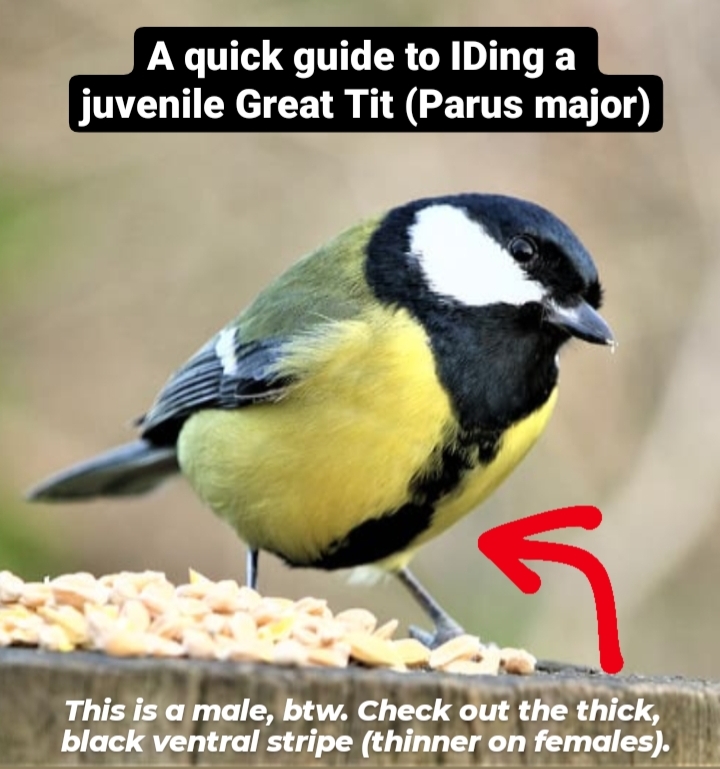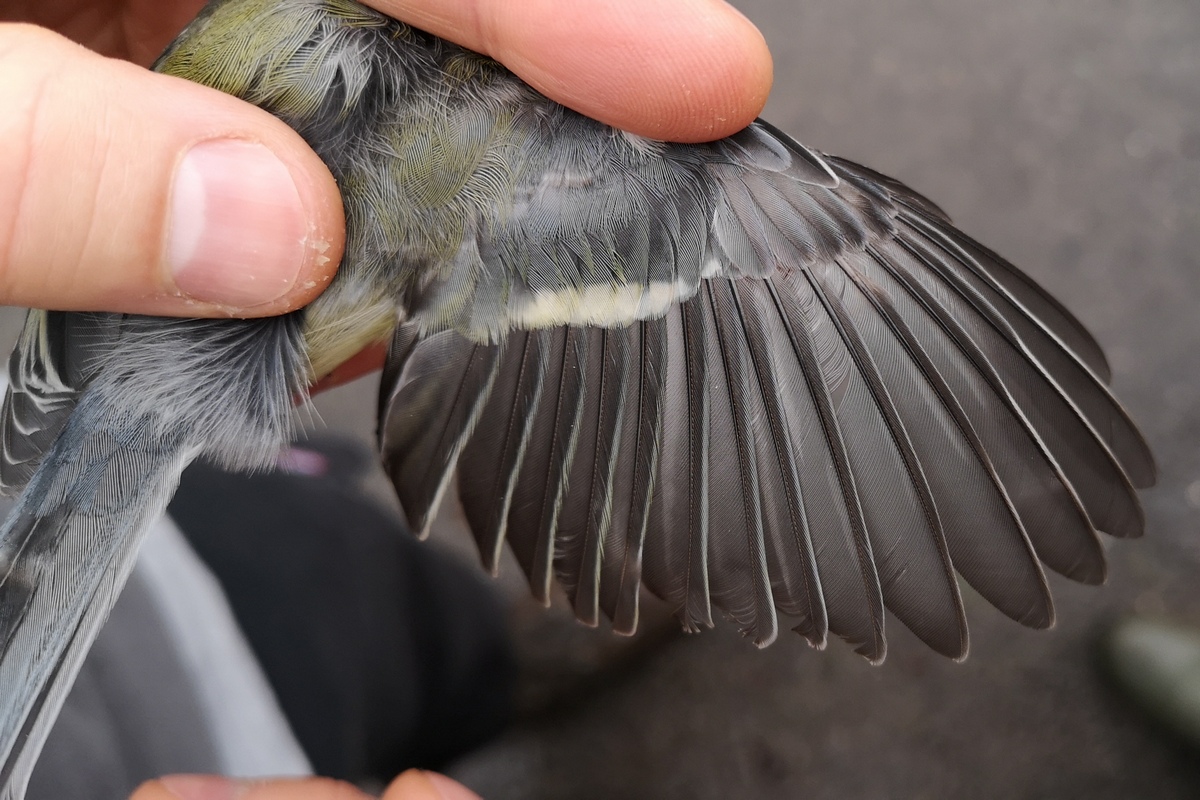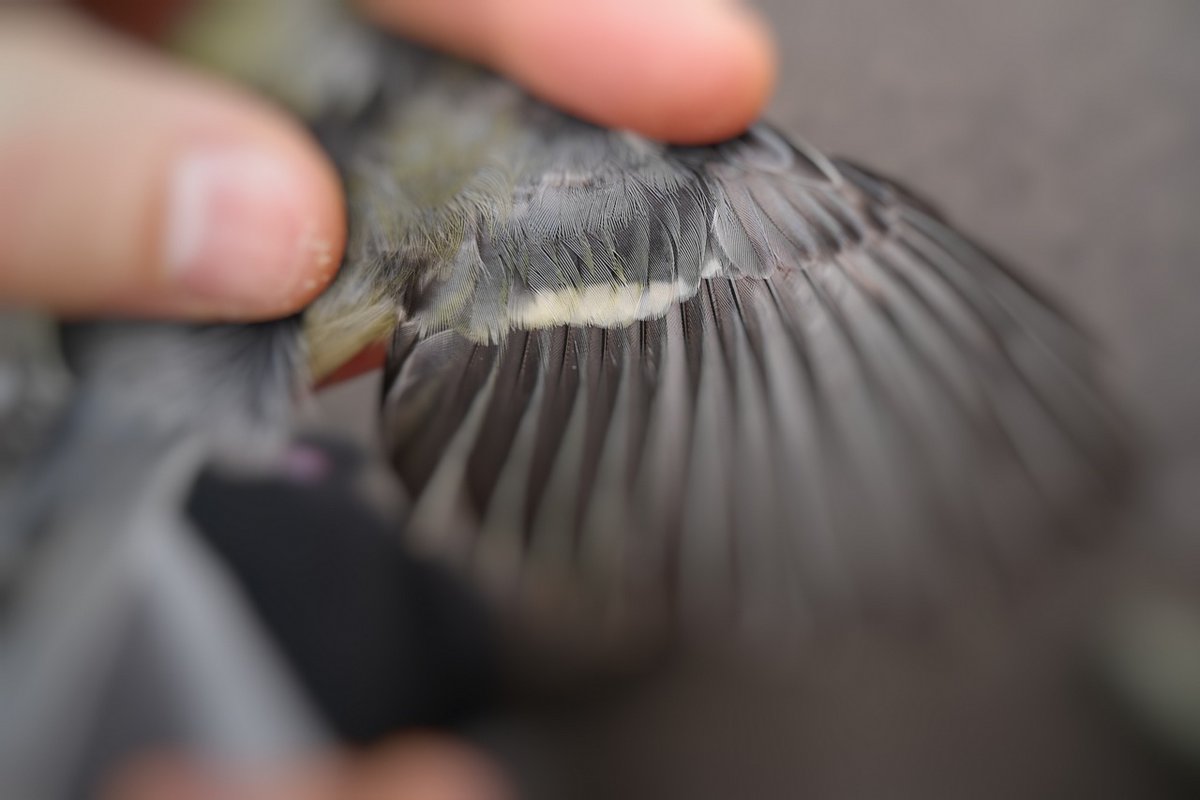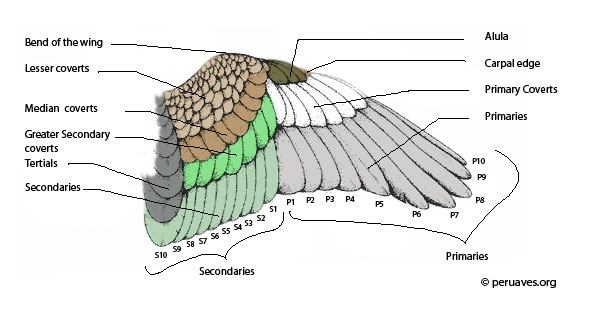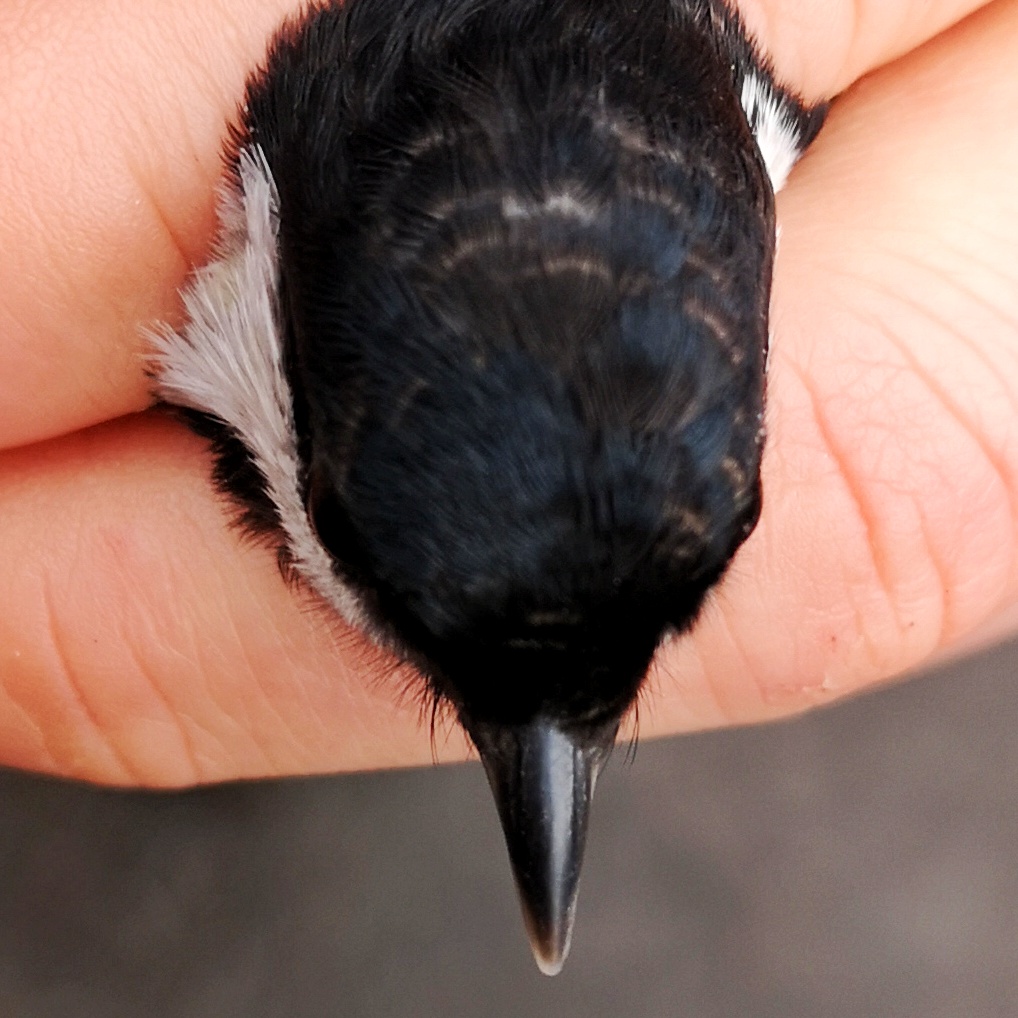Bird ringing is an invaluable tool for ornithological conservation and management. We routinely age caught birds as part of this process. Here& #39;s a quick run-through aging a Great Tit, based on an individual caught (and subsequently released, of course), last week.
On the wing, we try to detect a contrast between old, juvenile secondary coverts (muted, with a buff-yellow tip and greenish fringe) and new, adult feathers (white tip and a blueish fringe).
Coverts are the feathers that overlap the bases of other, larger feathers. We tend to look most frequently at the secondary and/or primary coverts. Image from @peruaves https://www.avianreport.com/bird-flight-tail-feathers/">https://www.avianreport.com/bird-flig...
On the tail, we can see a lot of black bars and several large white blocks. These aren& #39;t typical features. The white blocks suggest that those tail feathers were lost at different points, previously. The black barring is related to food quality and availability while in the nest.
On the crown, we can see that some feathers have a brown outer fringe. These are juvenile feathers - an adult would have an entirely black cap.
N.B. Bird ringing is only undertaken by trained, licensed people. The welfare of the bird is paramount. The @USWNatHistory ringers, @PiedflyWales and me, have a lot of experience and are licensed by the @_BTO. For more on bird ringing, see https://www.bto.org/our-science/projects/ringing">https://www.bto.org/our-scien...

 Read on Twitter
Read on Twitter